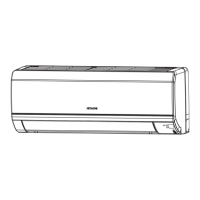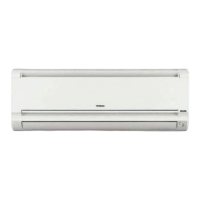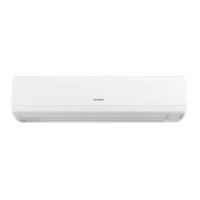3.4.7 Flared connection mounting
Line up the end of the flared pipe to face the fitting to which it is to
be threaded.
Gently rest the female cone on the male cone and check that the measurement is correct. Keep the connection lined up
with one hand and gently thread on the flare nut with the other.
Tighten the connection to the corresponding tightening torque indicated in the table below.
Nominal diameter
Tightening torque
mm Inches
Ø6.35 1/4 20 Nm
Ø9.53 3/8 40 Nm
Ø12.7 1/2 60 Nm
Ø15.88 5/8 80 Nm
Ø19.05 3/4 100 Nm
Ø22.20 7/8 –
Ø25.40 1 –
Ø28.60 1-1/8 –
C A U T I O N
• Secure the fixed connection with a suitable wrench and use a torque wrench to tighten the flare nut on the
threaded connections.
• Do not exceed the torque value indicated in the table. The fitting can become misshapen and the connection
may leak.
3.4.8 Refrigerant gas pipe insulation
The gas refrigerant circulates through the pipes at a very low temperature (several degrees below zero, depending on the
time of year and the installation). The difference in temperature with the ambient air is extremely large and causes two
significant phenomena to be taken into account:
• Cold irradiation along the entire pipe.
• Condensation of the humidity in the surrounding air.
Actually, cold irradiation is the temperature gain experienced by the gas, as when it circulates under pressure and at such
low temperatures along the inside of the pipes, it is actually liquid and obtains the outdoor temperature (boiling at a very
low temperature) to turn into gas.
As a result of the temperature gain (although it is actually perceived as cold emission), the gas loses its capacity to cool
and the system does not perform as expected. Furthermore, the humidity in the surrounding air condenses on the pipe and
the greater the temperature difference and the longer the pipe, the more water is produced.
In view of this, the gas refrigerant pipes must be fitted with a suitable insulation system that prevents the increase in
temperature of the gas refrigerant and the subsequent loss of energy and the condensation of water along the entire pipe.
3 Piping work and
refrigerant charge
87
SMGB0063 rev. 1 - 10/2010
3

